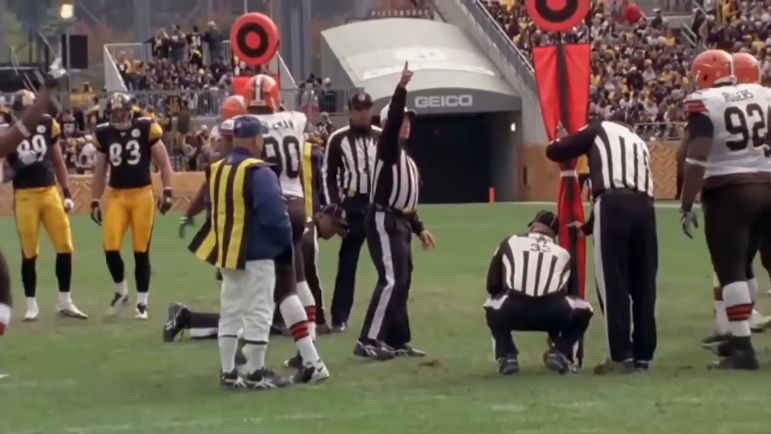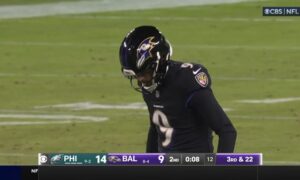That old joke about how a multi-billion-dollar business like the NFL still uses a chain gang (and sometimes a note card) to determine a crucial first down? It might not land anymore. According to multiple reports coming from the league’s competition committee, football might choose a smarter way to move the sticks.
According to CBS Sports reporter Jonathan Jones, the NFL recently tested “optical tracking” to measure first downs. The league attempted it during at least three games this year, including Super Bowl LVIII. If there’s enough support, the league could make the switch and let tracking determine first downs as early as this upcoming season.
Like most new-age concepts the NFL’s exploring, it looked toward other football leagues as guinea pigs. The USFL, a league now merged with the XFL to create the UFL, experimented with first-down tracking in 2022. An article from the Sports Business Journal described one example of how the technology was used to determine a first down on a QB sneak, creating a mass of bodies that made it hard to tell if there was a conversion.
“Instead, a ring of eight proprietary 4K, 60 frame-per-second cameras, as well as Lidar technology, from startup tracking company Bolt6 had already triangulated the ball, computed its location and sent the data to Fox Sports. From there, the first-down verdict was converted into a visual display on the in-stadium scoreboard and television broadcast simultaneously: no first down, short by 10 inches.”
It’s not known if the NFL will use Bolt6 or a different company. To be clear, that technology – at the time, at least – worked off where the officials had spotted the ball, being able to measure it in relation to the line to gain within inches. It was not an objective measure of where the ball should be, though the SBJ article indicated that the company’s goal was to reach that point. This approach still creates a level of subjectivity but would make it unnecessary for the chain gang to be brought onto the field to measure for a first down, the first step in allowing technology determine what is and isn’t a first down.
This type of tracking has been theorized for years. In a 2021 article also written by Jones, RFID tracking was getting close to accurately spotting the football.
“Inevitably, people consistently ask about ball placement,” said Zebra Technologies VP of Business Development John Pollard. “Is it feasible that RFID technologies, other technologies, can help support game-management processes? Yeah, it’s technically feasible. Technology can provide added benefits and there are opportunities for that. What those are, we’re still in a period of discovery and consideration. But in terms of accuracy and locationing, we’re pretty close.”
Logistically, putting a chip in a football isn’t as easy as it sounds. But technology is making progress toward being consistent and accurate, the two main hesitations behind making a switch. And soon enough, they figure to get there. The NFL could take its first step in 2024.
In other NFL-tech news, the “delay” that exists between the play clock going down to zero, giving the offense an extra second to snap the football, might be eliminated. Jones says the NFL tested watches that would buzz the moment the play clock reaches zero instead of the ref looking up, seeing the clock, and then blowing the whistle.
All ideas will be voted on by the competition committee – which Mike Tomlin sits on – and owners during offseason meetings. But the NFL could feel a little more modern come 2024.








